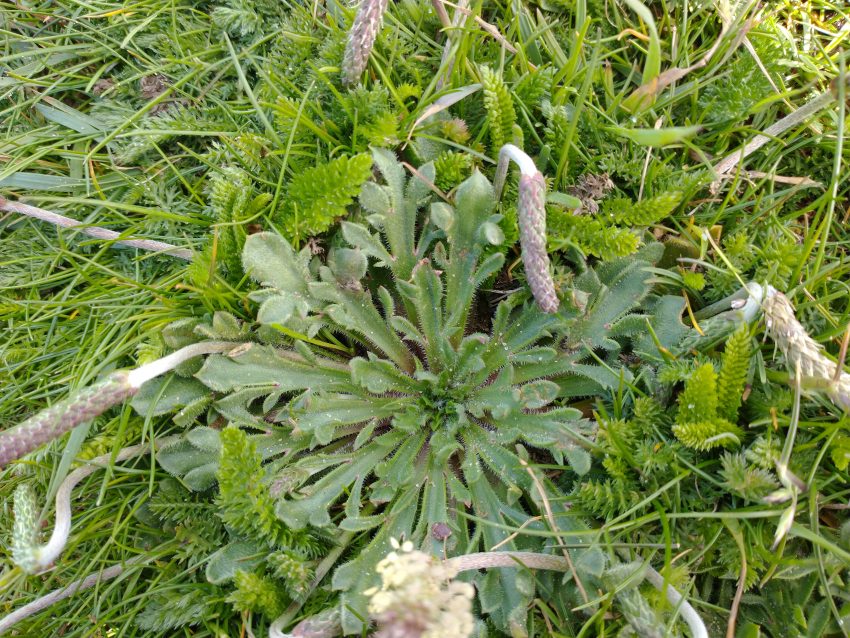Identifying Plantains – Plantago
Plantain flowers tend to spring from a rosette of leaves at the base and have noticeable leaf ribs. Their flower spikes have no sepals or petals.
Ribwort plantain – Plantago lanceolata
The leaves of this plant are long, narrow and lance-shaped with parallel ribs or veins, about 10 to 15cm long. I found it in flower in May in short grass at Danebury Hill Fort in Hampshire. The flowers stems were about 20cm high and brown with long, pale stamens. I noticed that the flower heads were not as long but wider than other species I’ve seen.
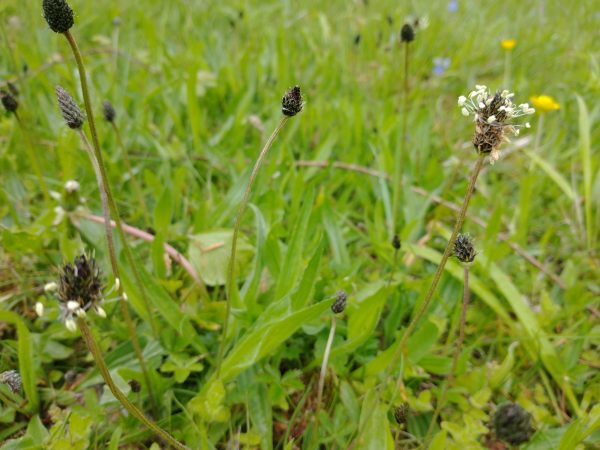
Greater Plantain – Plantago major
This plantain has broader leaves than Ribwort but still has the prominent ribs. Unsurprisingly it is also known as Broadleaf plantain. The first photo I took is of the cultivated red form which grows on my patio, but you can see that the shape is the same.
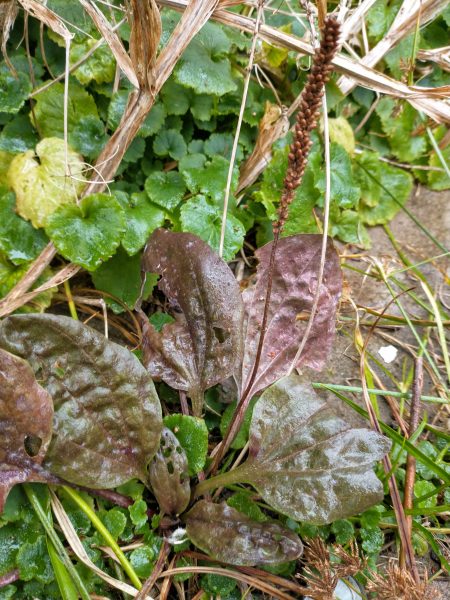
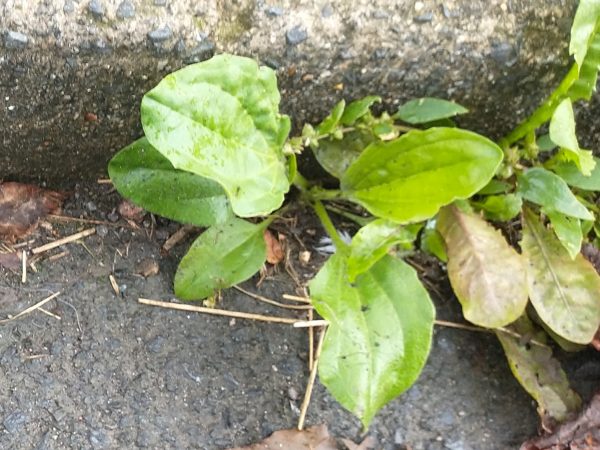
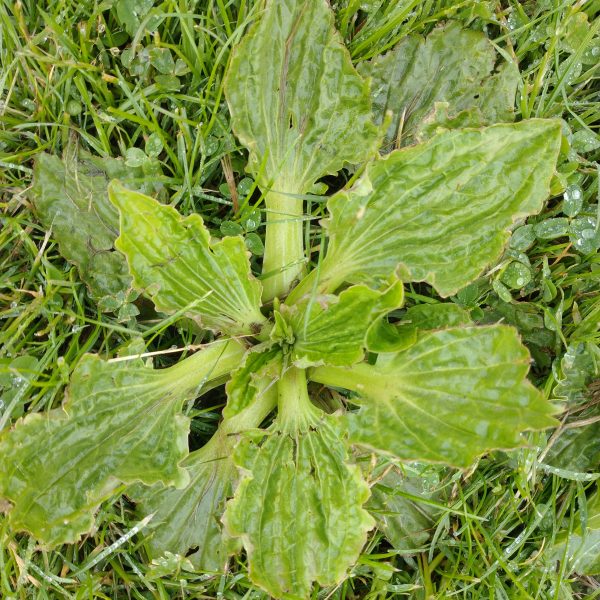
Plantago major in flower
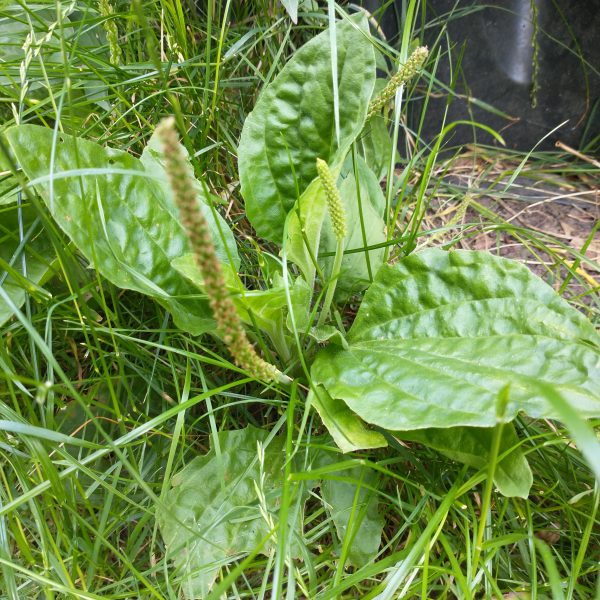
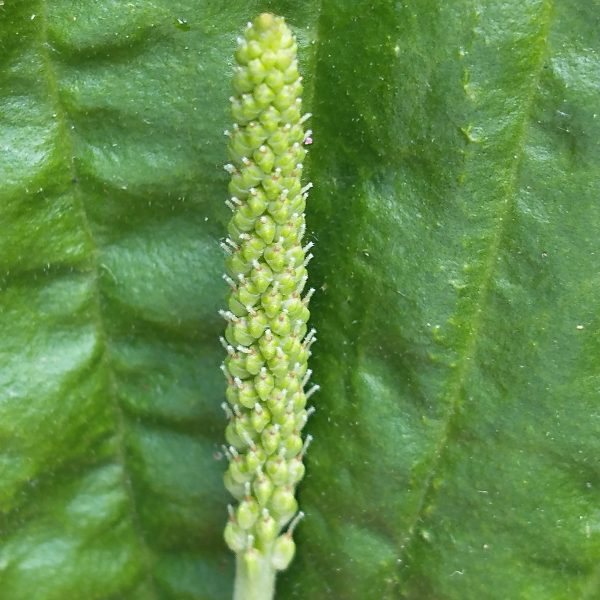
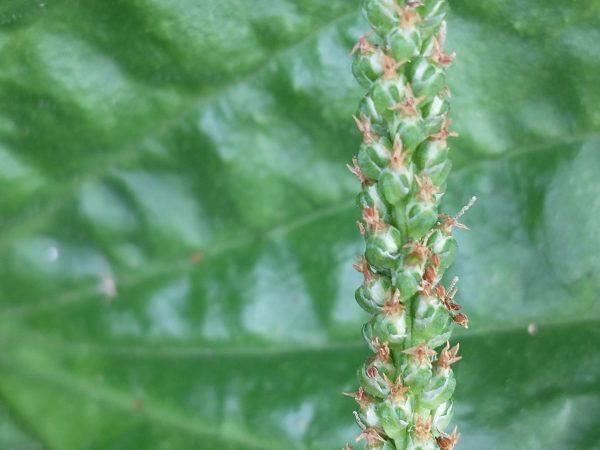
Bucks horn plantain – Plantago coronopus
This plantain is common where I live as it likes coastal locations. The leaves resemble antlers, hence the name. The flower heads are long and thin with primrose yellow stamens. The main image at top of page shows the downy nature. I took the photo below within a few metres of the sea in Seaford Sussex in May.
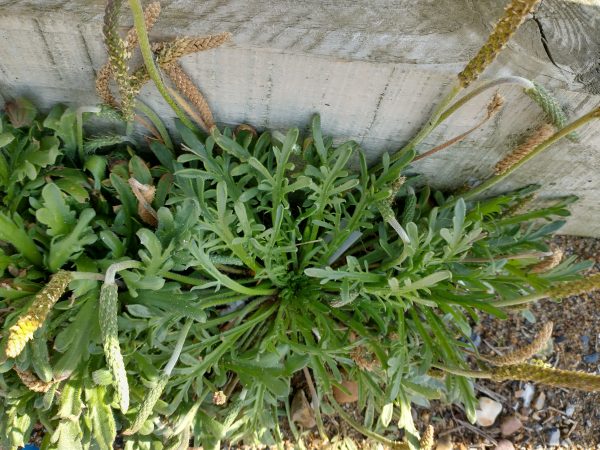
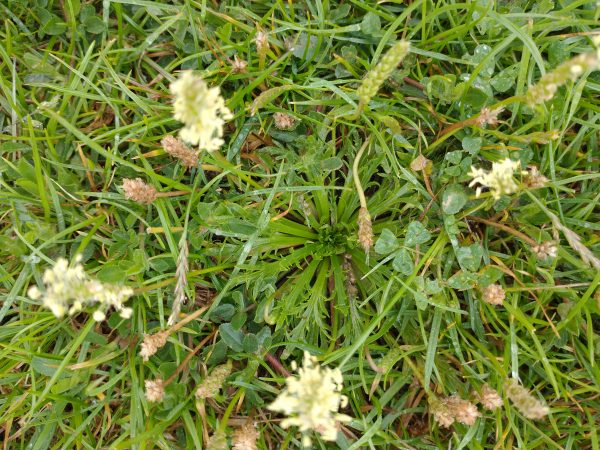
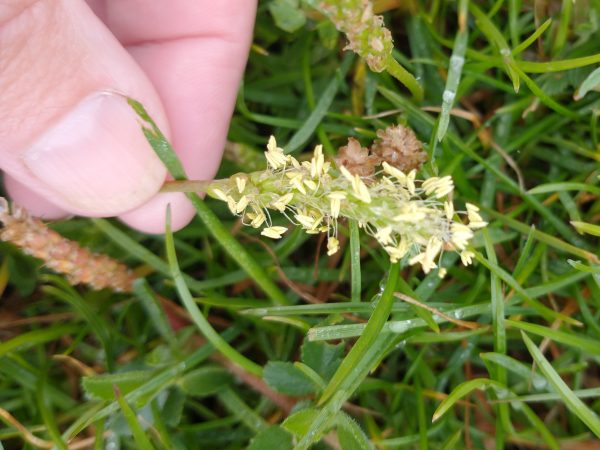
Buck’s-horn plantain flower – Plantago coronopus – Martello field Seaford – June 2022

Two plantains growing side by side – Alfriston Rd Seaford – Sep 2021
Hoary plantain – Plantago media
This plant has big blousy pale pink flowers. I was pleased to spot it growing in Cradle Valley Seaford in July.
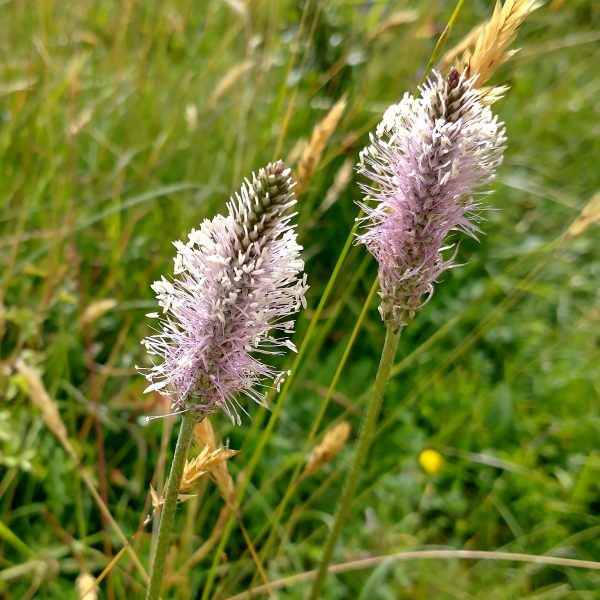
The leaves are visibly downy or hairy.
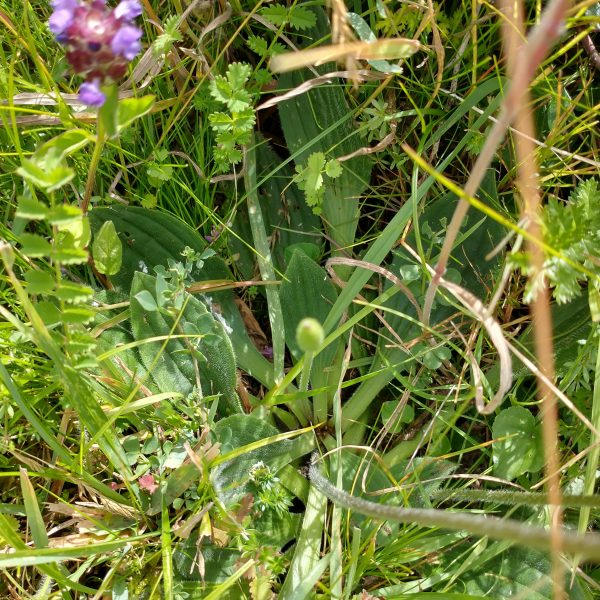
There are other varieties of Plantain which I haven’t yet seen including Sea plantain. Sea plantains, Plantago maritima like similar locations to Buck’s-horn, but have very narrow unbranched leaves and less hairs.
Blog posts mentioning Plantains or Plantago are tagged Plantain or Plantago
https://photographingwildflowers.co.uk/tag/plantain/
https://photographingwildflowers.co.uk/tag/plantago/

